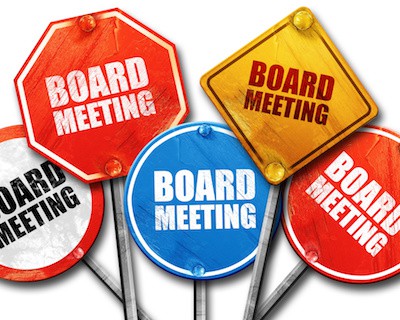A church planter challenged me recently on whether church boards have to use Robert’s Rules of Order to conduct meetings. I started digging around and opened a whole can of worms.

His question came from a common place: I haven’t met a church planter yet that likes (understands?) Robert’s Rules. But it also came with a theological challenge – where are Robert’s Rules of Order described or modeled in the Bible?
Good question.
Biblical Reference Points
Without an in-depth exegesis of all subject passages, I don’t think the Bible has overwhelming instruction about how to run church board meetings. For that matter, it doesn’t have a lot to say directly about Church Boards as such.
The New Testament has plenty to say about, and to, Elders, and describes leadership by a plurality of Elders. But it seems to only hint about how they made decisions as a group (for example, see Acts 6:1-7).
So for our purposes here, let’s define a church board meeting as “how the church leaders make a group decision”.
What are Robert’s Rules?
Created in 1876 by US Army officer Henry Robert, he based them on how the US Congress conducted business and passed laws. You’ve experienced some version of them when you hear things like:
- “I move that we approve…”
- “I second the motion.”
- “Let’s table that discussion.”
- “All in favor, say ‘aye’.”
This way of running church board meetings is the most common in the US. But rarely have I seen it strictly followed and enforced.
Other Models Available
Turns out there’s not just one or two other options, but a whole spectrum of approaches to running board meetings. Here are some top alternatives very briefly described:
Consensus Process
Every article I’ve found has associated this approach with the Quakers.
“Consensus decision-making is a group decision-making process in which group members develop, and agree to support a decision in the best interest of the whole.” Wikipedia
PRO: buy-in is high because everyone agrees to the decision after being heard
CON: can take considerable time to reach consensus
DEMOCRACY 2.0
If you like the spirit of Robert’s Rules, this one might be for you.
“DEMOCRACY 2.0 is a new ultra lightweight rules of order system for democratic meetings, tailored to fit the needs of small to medium-sized non-profits, and designed for practical use by ordinary people facing everyday realities.” SocialFish
PRO: based more on principles than rules, easily understood
CON: it’s still based on democratic process, which may or may not fit your theology
Dynamic Facilitation
“A dynamic facilitator follows the group’s interest and energy wherever it goes, so a group often ends up in a very different place than they started, frequently with a collective breakthrough of some kind.” Co-Intelligence
PRO: great at outside-the-box creative solutions to impossible problems or difficult people, fosters true dialog and everyone being heard
CON: requires trained/skilled facilitator
Martha’s Rules of Order
This is a sort of hybrid approach that embraces both consensus and formal voting, “a way to decide whether or not an issue [is] important enough to warrant taking the extra time to reach consensus.” TopsSoft
PRO: simple, combines best of both consensus and Robert’s Rules
CON (potentially): it was originally created for condo/HOA boards so it’s built for a voting membership
Bottom Line
So where I land on whether church boards have to use Robert’s Rules of Order is: no.
But it’s not only just the Bible that’s at play here. Perhaps the main reason for having a “church board” in the US is because the group of believers wants to be organized under the laws and benefit from the tax code of the government. Romans chapter 13 seems to make allowance for that.
And anyone who serves on the board of any US nonprofit has a duty to lead and serve well. Random decision-making methodology and sloppy records won’t cut it.
Pick some system and use it. Even include that decision in your meeting minutes. Be intentional and consistent in how you make group decisions. And above all, keep good records!
